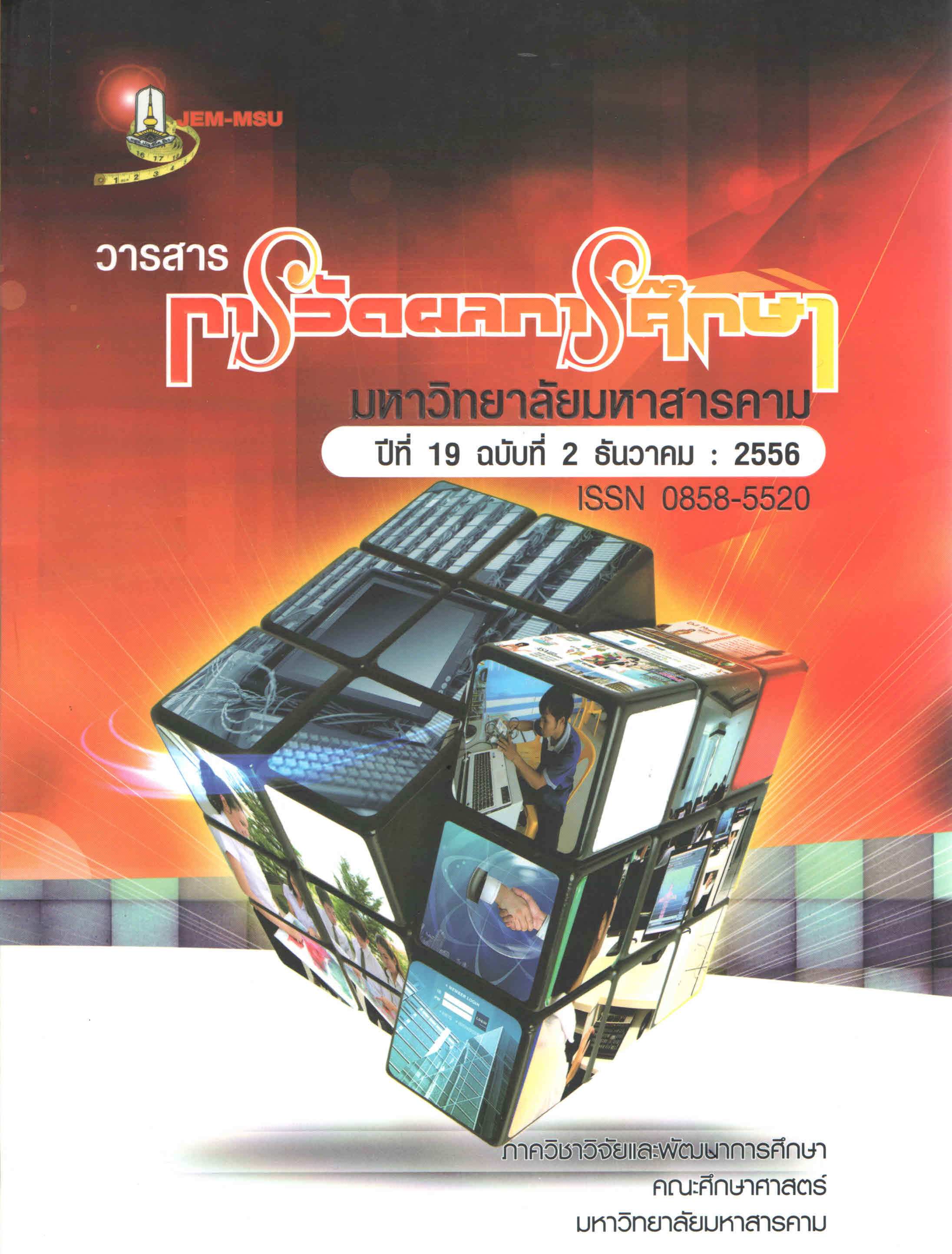Development of a modified Cloze test different models. To measure Reading comprehension in English of Prathomsuksa 6 students. Under the Office of Si Sa Ket primary Education Service Area Zone 3
Main Article Content
Abstract
The reading comprehension for skills and essential factor of English reading, I s the
students are able to understand a text that the students read. They can read and learn nicely,
correctly and fluently. Modified cloze test is once of appropriate test. To used measure a
student’s reading comprehension. The purposes of this study were : to develop five types of
modified cloze test, to compare qualities of the five type of the modified cloze test in their
difficulties, discriminating power, reliabilities, validities, and to construct norms. The sample were
575 Prathomsuksa 6 Students from 18 schools under the office of Sisaket Educational service
Primary School area zone 3. Divided into five groups each group has 115 students. They were
selected by the use of a multi- stage random sampling technique. The instrument included five
types of modified cloze test : 1 multiple choice, 2 Matching test, 3 G- test, 4 Meaning clues and
5 Chang letter clues. Each types used with 115 students. The data were analyzed by Analysis of
Variance (One-way ANOVA) and Chi-Square.
The Study results were as follow:
1. The qualities item of the five types of modified cloze test had the difficulty and the
discriminating power was appropriate. In which the multiple choice had item difficulty from .69 to
.80 and the discriminating power from .41 to .82, the matching had item difficulty from .45 to .80
and the discriminating power from .34 to .83, the G- test had item difficulty from .44 to .80 and the
discriminating power from .20 to .77, the Meaning clues had item difficulty from .52 to .79 and the
discriminating power from .22 to .65, and the change letter clues had item difficulty from .43 to .77
and the discriminating power from .20 to .67,
2. The qualities item of the five types of modified cloze test had the reliabilities and
the validities was appropriate. had the reliabilities from.915 to .982 and the validities from .868 to
.917
3. Test results significantly.
3.1 The difficulties of the five types of modified cloze test were significantly
different at .01 level, in which the difficulty of the multiple choice, the matching, the G- test, and
the meaning clues modified cloze were significantly different at .01 level.
3.2 The discriminating power of five types of modified cloze test were significantly
different at .01 level, in which the discriminating power of the multiple choice, was different from
the G- test, the meaning clues and the change letter clues modified cloze significantly different at
.01 level. And the discriminating power of the matching was different from the meaning clues
and the change letter clues significantly different at .05 level.
3.3 The reliabilities of five types of modified cloze test were not significantly
different.
3.4 The validities of five types of modified cloze test were significantly different
at .05 level, in which the validities of the matching was different from the meaning clues, the
G- test was different from the change letter clues and the meaning clues was different from the
change letter clues.
4. The norms of the multiple choice test had the T-score from T28 to T66, the
matching had the T-score from T30 to T68, the G- test had the T- score from T33 to T69, the
meaning clues had the T- score from T33 to T73, and the change letter clues had the T- score
from T31 to T67,
The conclude to all five cloze test, this study found that the cloze test was appropriate
for English reading comprehension in prathomsuksa six students. Modified Cloze test is once of
appropriate test. To used measure a student’s reading comprehension to achieve the purpose.
Article Details
The content and information contained in the published article in the Journal of Educational Measurement Mahasarakham University represent the opinions and responsibilities of the authors directly. The editorial board of the journal is not necessarily in agreement with or responsible for any of the content.
The articles, data, content, images, etc. that have been published in the Journal of Educational Measurement Mahasarakham University are copyrighted by the journal. If any individual or organization wishes to reproduce or perform any actions involving the entirety or any part of the content, they must obtain written permission from the Journal of Educational Measurement Mahasarakham University.


